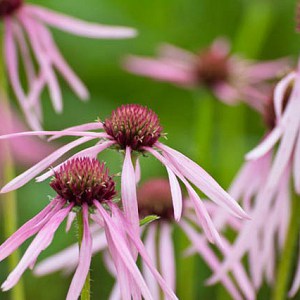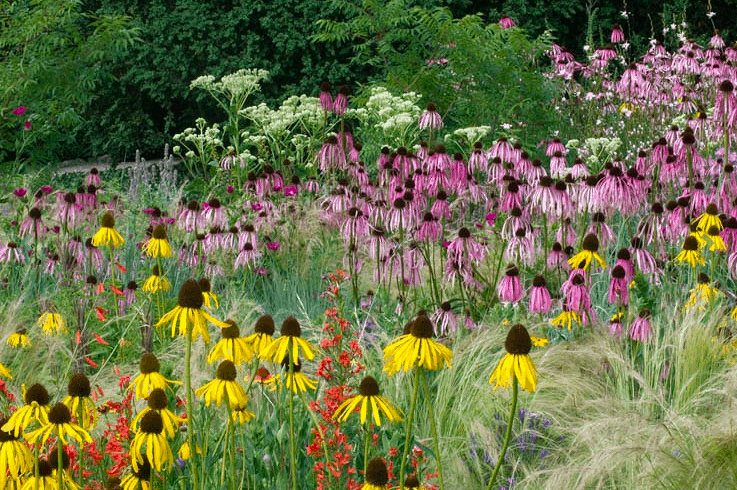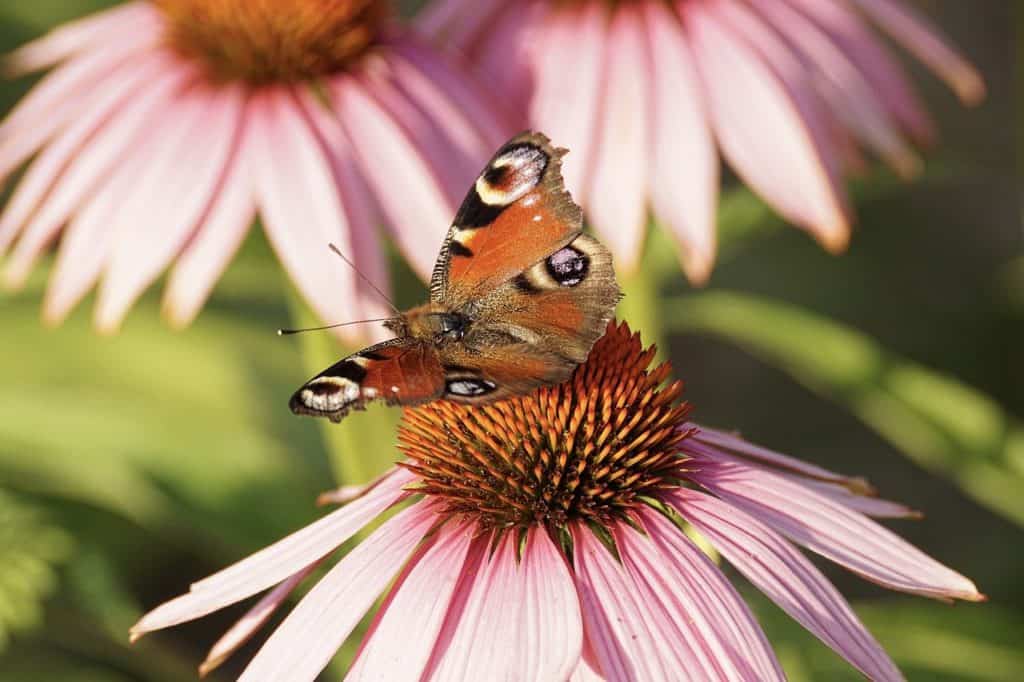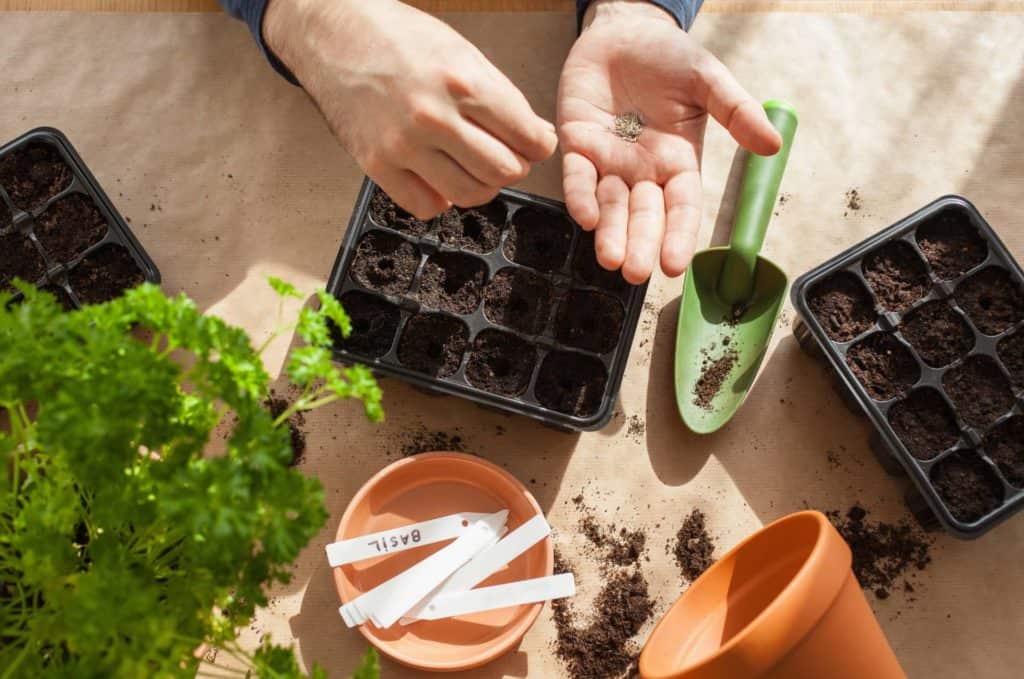Echinacea or Purple Coneflower is a Native Flower at Home as a Garden Pollinator Plant, 4 easy to grow native species to try at home.
Echinacea Coneflower is a native wildflower, that is at home in the garden or meadow, and known as one of the top ten native pollinator plants to grow from seed at home.
Fill your garden with wildlife by growing these purple, pink, or white pollinator magnet perennials that also attract butterflies and Hummingbirds.
Head Gardener Solutions
“A Sea of Purple Coneflower Adored by Butterflies”
Eye-popping color of the large daisy type flowers, the Purple coneflower grows multiple branched stems in preparation for flowering appearing as if they flower continuously through Summer, regular dead-heading will prolong flowering.
The dry seed heads proudly stand upright throughout Fall, the button seed-heads attracting a host of insects, birds, and pollinators to the foray.
Echinacea Coneflower species are long-lasting perennials, some dwarf cultivars in my experience are short-lived a good reason to choose native perennials.
Having worked with Rudbeckia in many gardens across Europe and Stateside my choice of four species native for every garden below.
4 Native Coneflowers to grow at home:
Echinacea purpurea – Purple Coneflower, commonly seen in gardens and the landscape.
Echinacea angustfolia – Narrow Leaf Purple Coneflower, enjoys dry meadows and prarie.
Echinacea pallida- Pale Pink Coneflower, dropping petals on large flowers try a beautiful cultivar called ‘Hula Dancer’
Echinacea paradoxa – The only true Yellow Echinacea Coneflower species. Large sunrays of hope in late May.
Echinacea or Purple Coneflower is considered the most widely grown wildflower and plays an important role for pollinators and wildlife.
E. purpurea has long been associated with medical treatment, from the common cold to urinary tract infections, despite the medical profession critical of it’s effectiveness. Echinacea is a popular plant-based supplement.
Rudbeckia roots are reported to have immune-stimulant properties similar to that of Echinacea.
How to sow:
Echinacea Coneflower can be grown from seed, cuttings, or division start seeds indoors after cold stratification or directly outside in Fall. Coneflower usually takes a minimum of 14 weeks from seed to flower. Seeds started indoors can be sown up to 8 weeks prior to the last frost.
Echinacea can be sown just beneath the compost surface, I use a quality seed compost in a 4” square pot and fill it to the brim, then tap firmly to allow the compost to settle before sowing the seeds.
Top the surface of the compost with perlite or vermiculite and water well with a fine rose the seeds require a moist surface to germinate but be careful not to overwater.
Echinacea Coneflower grows 2-3ft in full sun and enjoys well-drained soil, but performs best if watered during dry spells. Once established needs little attention and can flower for almost 6 months.
Flowering can be encouraged by dead-heading regularly, leaving a few seed-heads to freely re-seed. Good disease and pest resistance but dislike damp growing conditions, which may cause mildew on leaves and root rot, causing the plant to fail.
Echinacea Coneflower seeds need light for germination so do not cover, I use a quality seed compost in a 4” square pot and fill it to the brim, then tap firmly to allow the compost to settle. Top the surface of the compost with perlite or vermiculite and water well with a fine rose then sow the seeds on the moist surface of the pre-prepared pot.
Growing Echinacea Coneflower:



Echinacea Coneflower should be one of the first plants for new gardeners to grow from seed and an old favorite for many.
Flowering can be encouraged by dead-heading regularly, leaving a few seed-heads to freely re-seed. Good disease and pest resistance but dislike over wet growing conditions, which may cause mildew on leaves and root rot, causing the plant to fail.
Free draining full sun location preferred, however, coneflower will survive drought conditions but should be watered to prolong flowering. Echinacea benefit from a mulch of recycled organic mulch in Spring to help improve moisture retention and Fall mulch to protect perennials from harsh winter weather.
Echinacea Coneflower is versatile, growing in all types of gardens, prairie, or planters, they are ideal for attracting bees and butterflies to your garden or balcony, if seeds are left to dry, the coneflower heads provide hungry birds with seeds from late fall through winter.
Plant Magick:
Echinacea coneflower is believed to help through poverty, invite prosperity and healing. Generations have used Echinacea for medical treatment for all types of ailments and are a popular ingredient in many health tonics.
I find growing plants from seed incredibly rewarding, even the smallest of outdoor garden areas can be a productive workout for all the family. Try thinking of your garden as a living kitchen and grow to love fresh flowers, organic fruit, and vegetables straight from your own backyard oasis.
Stephen Pryce-Lea
How’s your soil health? This simple soil test kit is easy to use and results in just a few days! Essential Test kit for gardeners



